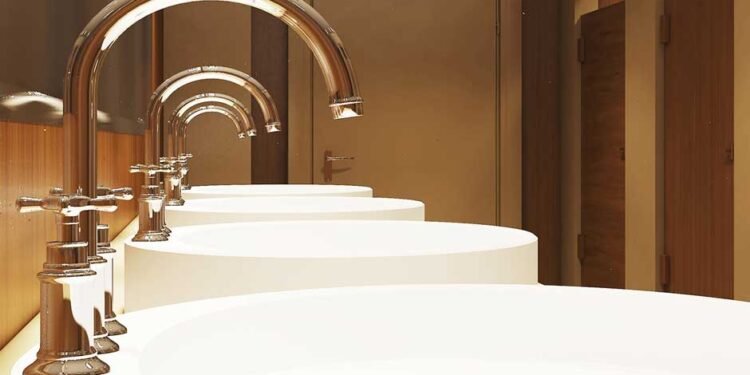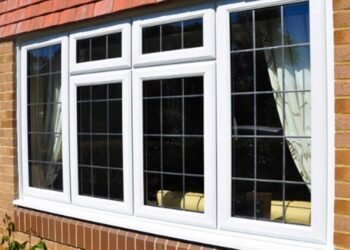Designing and setting out bathrooms in your business is an important task that goes beyond aesthetics. Whether you’re running a retail shop, office, restaurant, or any other type of commercial space, the bathroom is a key area that significantly impacts customer and employee experience. A well-planned bathroom can enhance comfort, hygiene, and accessibility, all of which contribute to a positive impression of your business. Here’s what you need to know when setting out bathrooms in your commercial space.
1. Understanding the Legal Requirements
The first step in designing bathrooms for your business is ensuring that you comply with local building codes and regulations. These codes set standards for accessibility, safety, and hygiene that all businesses must follow. Talk to a plumber Hobart or local to you that are familiar with plumbing in commercial buildings. Some of the main aspects to consider include:
- Accessibility (ADA Compliance):In many countries, including the U.S., businesses are required to provide accessible bathroom facilities that comply with the Americans with Disabilities Act (ADA) or equivalent standards. This means the bathrooms must be designed to accommodate people with mobility challenges, including wider doorways, handrails, adequate turning space for wheelchairs, and low-height sinks.
- Number of Toilets:The number of bathrooms required is usually determined by the size of your business and the number of employees or customers you expect to serve. For instance, restaurants and office buildings may require more bathrooms due to higher occupancy. Ensure that your bathroom facilities meet the minimum standards outlined in local regulations.
- Gender-Neutral Bathrooms:Consider whether your business will provide gender-neutral bathrooms, which have become increasingly common and can be a welcoming option for a more inclusive environment. In some regions, there may also be regulations encouraging or mandating gender-neutral restroom options.
2. Prioritizing Hygiene and Cleanliness
A clean and well-maintained bathroom reflects positively on your business. It shows that you care about the well-being and comfort of your employees and customers. To maintain hygiene, it’s important to choose durable, easy-to-clean materials for your bathroom surfaces and fixtures.
- Choose durable materials:Opt for materials that are resistant to moisture, mold, and bacteria. Ceramic tiles, stainless steel fixtures, and high-quality countertops are common choices for commercial bathrooms because they are easy to clean and maintain. For walls and floors, consider materials that are both slip-resistant and resistant to water damage.
- Install touchless fixtures:Touchless faucets, soap dispensers, hand dryers, and flush systems are essential for promoting hygiene. These fixtures reduce the risk of contamination and are particularly important in high-traffic areas like office buildings or restaurants.
- Regular maintenance:Frequent cleaning and maintenance are crucial to keeping your bathrooms sanitary. Ensure that your staff or cleaning crew is on a regular cleaning schedule, particularly during peak business hours. Stock bathrooms with sufficient supplies of soap, paper towels, and toilet paper to avoid any inconvenience for users.
3. Considering Layout and Space Efficiency
When setting out the layout of your business bathrooms, space efficiency is key. Whether you’re working with a small area or a larger space, the layout should ensure smooth traffic flow and adequate privacy.
- Efficient use of space:For small bathrooms, consider using compact fixtures like wall-mounted sinks and space-saving toilets to maximize available space. Ensure that the bathroom layout allows for easy movement, particularly if you’re incorporating accessible stalls or changing areas.
- Privacy:Privacy is essential in both customer and employee bathrooms. Ensure stalls are fully enclosed or that there are sufficient partitions between urinals or sinks. Additionally, avoid placing bathroom entrances directly in view of common areas, as this can make users uncomfortable.
- Ventilation and odor control:A good ventilation system is essential for controlling moisture and preventing odors in your business bathrooms. Install exhaust fans and consider adding air fresheners or odor-neutralizing systems to maintain a pleasant environment.
4. Enhancing Comfort and Design
While functionality and hygiene are crucial, the design and comfort of your bathrooms can also create a lasting impression. The bathroom’s design should be consistent with the rest of your business, creating a cohesive and inviting atmosphere.
- Lighting:Good lighting is crucial for both practicality and aesthetics. Use bright, well-placed lighting fixtures to illuminate key areas, such as mirrors, sinks, and stalls. Avoid harsh fluorescent lighting, and instead, opt for warm or natural light to create a more pleasant ambiance.
- Aesthetic touches:Adding thoughtful details like mirrors, decorative tiles, or artwork can elevate the overall look of your bathroom. In a restaurant, for example, a well-designed bathroom can add to the dining experience, while in an office, a comfortable, well-lit bathroom can enhance employee satisfaction.
- Comfort features:If space and budget allow, consider adding comfort features such as baby changing stations, seating areas, or extra storage for toiletries. These additions make the bathroom more user-friendly and accommodating for a wide range of needs.
Conclusion
Setting out bathrooms in your business involves more than just installing fixtures. It requires careful planning to ensure that the space is functional, compliant with regulations, and reflective of your company’s values. By focusing on hygiene, accessibility, efficient use of space, and design, you can create bathrooms that enhance both the user experience and the overall impression of your business. Investing time and resources into well-designed, comfortable bathrooms will not only improve customer and employee satisfaction but also contribute to a more professional and welcoming environment.












